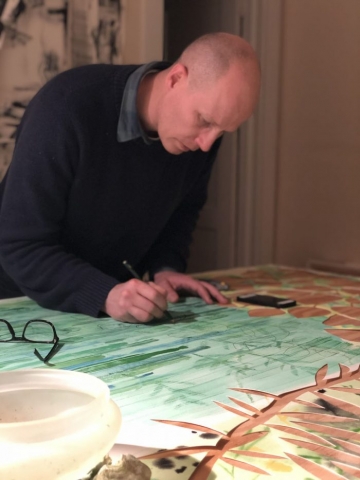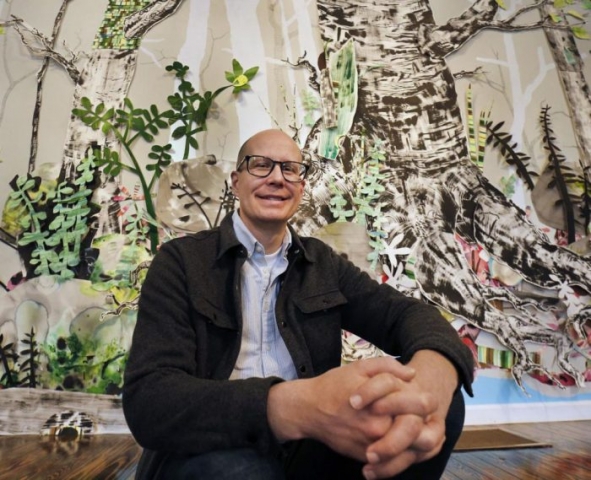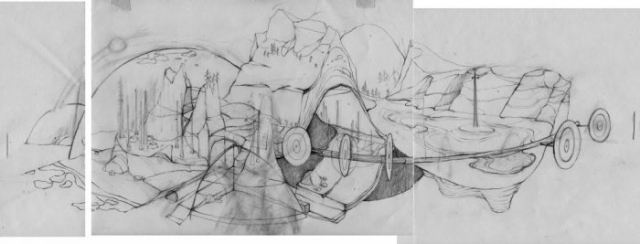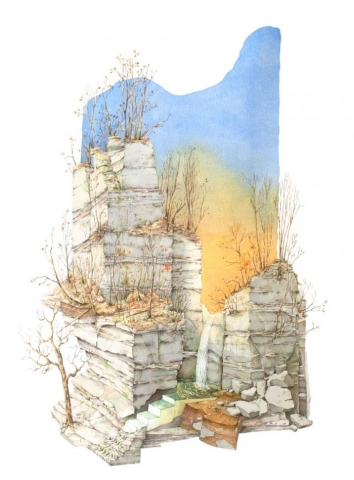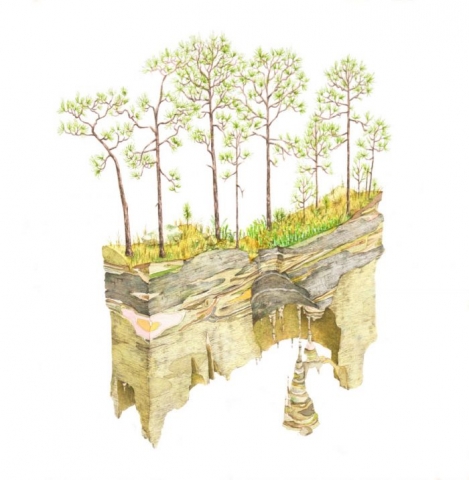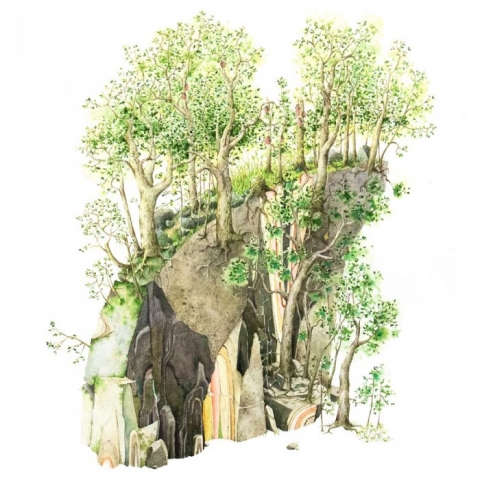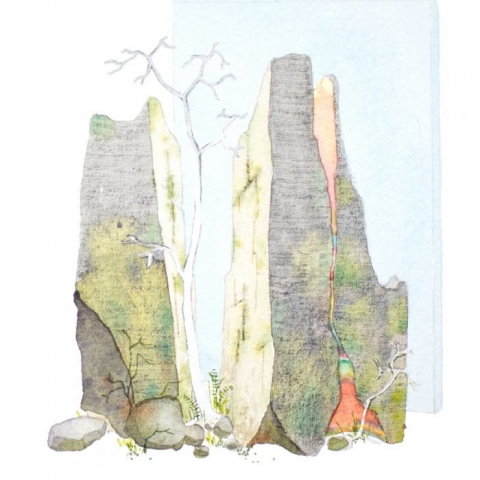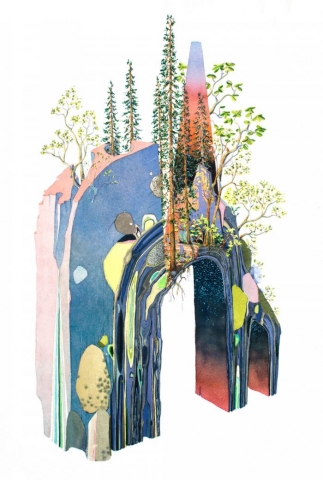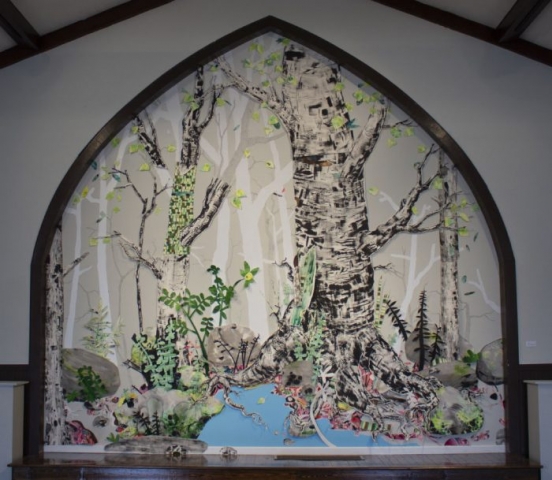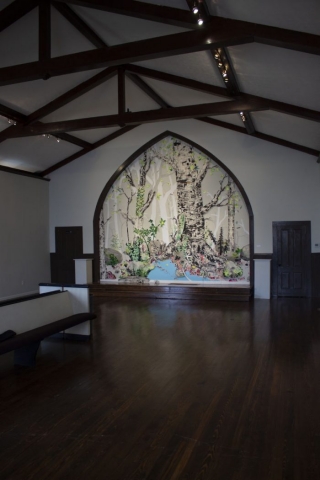
B20: Wiregrass Biennial showcases the region’s most talented contemporary artists, illustrating the South’s rich cultural heritage. The juried exhibition encourages innovative and progressive work that utilizes a variety of art forms and media and will feature paintings, sculptures as well as mixed media, new media and installation art. This year’s show features thirty-nine artists from eleven states.
B20 Artist Interview with Bryce Lafferty
B20: Wiregrass Biennial is a juried exhibition that encourages innovative and progressive work and showcases the South’s most talented contemporary artists, illustrating the region’s rich cultural heritage. Selected work utilizes a variety of art forms and media, including paintings, sculptures, mixed media, new media, and installation art. Three jurors chose from a field of over 130 entries for this year’s exhibition — the first virtual exhibition ever for WMA — featuring 39 artists from 11 states.
We’ll be sharing a series of interviews with B20 artists during the run of the exhibition, and our eighth is from Jacksonville, Alabama-based artist Bryce Lafferty.
Where do you find inspiration for your artistic practice?
I think my art comes out of an ordinary curiosity about the world and a desire to express the thoughts and feelings that come to mind when I experience the power of nature. I also love to read. Usually I come home and read about a place that I’ve visited. I love fiction, but lately I’ve been caught up in natural history books. It was funny, I received an excellent book on Alabama’s natural history for my birthday and while opening the gift I said out loud “Maybe I’ll give my book on grasses and forbs a rest and dive into this new book for a while”. My kids were like, “Dad, what is wrong with you?” But I just love understanding these beautiful systems all around us. When I see these places and then begin to learn more about their significance, either through scientific or philosophical writings, my appreciation deepens and it gives me ideas.
When creating your landscapes do you work from a preliminary sketch or make it up as you go along?
I usually have a preliminary sketch. Drawing is an essential aspect of my practice. I draw draw draw. The majority of problem solving and development happens in the preliminary drawing phase. It usually begins with a thought or sensation that I can’t quite articulate. Maybe I’ve visited a really neat location and I want to express some aspect of that experience. I will draw over and over again trying work out a composition that is both balanced and that triggers in me a sense of discovery and excitement. I then transfer that drawing to watercolor paper. This is why I call these pieces drawings. The painting is by no means an afterthought, it’s just that most of the discovery happens for me at the sketching stage.
Why do you choose to work in watercolor and gouache to finish your drawings?
Watercolor has always felt like the right medium for me. I like the level of detail one can achieve with it. I like the transparency and the way the color bounces off the white paper. I also really like how the material disperses and mixes in a wash. Gouache is interesting because it can have a milky finish and I think that can often compliment the transparency of watercolor. Because gouache is opaque, it can also be useful when I need to correct an error. I’ve tried other mediums, but nothing seems to work for me like watercolor.
How has the current pandemic impacted your work and your practice?
I’m still an artist! But, I haven’t produced anything of value since March. It’s a combination of things. I don’t know why I feel this way, but I always feel like I’m indulging when I’m making art. Perhaps it’s because I enjoy it so very much. And trust me, I can get lost in a painting and not resurface again for days. With the uncertainty that the pandemic has brought and disruption to my schedule and the responsibility I feel to make the summer worthwhile for my kids, I just haven’t been able to make art. I have set up a new studio in a new home and I’ve been reading a lot. I’m looking forward to regaining some time and mental space for working, but I think it’s going to come slowly.
I’m also a professor. I see teaching art as an extension of my artistic practice. I was fortunate to be able to teach a watercolor course this semester. It was completely online. Wow, what an interesting challenge it was! I had some fantastic students who were ready for the ride and produced some very good work. It was an amazing learning experience for me.
Your artist statement says that most of your drawings are inspired by real places. Is there a place that inspired Tree of Life, featured in B20: Wiregrass Biennial?
Yes! This one is inspired by a trip I made with my family a few years ago. It was the first time I’d visited the west coast, seen the Pacific Ocean, crossed the Sierra-Nevadas, drove across the salt flats, and walked under the redwoods. It was a magical trip. It was really like a pilgrimage.
What was it that inspired you most about that place (follow up from above?)
I have never created a piece in this style as large as Tree of Life. And I wasn’t only trying to make a big watercolor. I was trying to express this journey – this change in the landscape as one journey’s west along I-80 from the salt flats in Utah. It is just breathtaking the change in environment, topography, climate, species, and land use. It’s really staggering. More than zeroing-in on any one particular place along that trip, I think that I was trying to express the rhythm of the journey. This up and down motion as one climbs mountains, descends into valleys, winds around hills, crosses deserts and arrives at the sea. I remember each part and was just in awe of these transitions.
The title for the piece comes from a monumental sculpture created by Karl Momen that sits along I-80 in the middle of the salt desert. It’s a striking contrast of artistic expression in an already suggestive landscape. The title seemed appropriate as a metaphor for the weaving of these different ecosystems and the beauty of the Redwood trees. I think of the sculpture, which I’ve included in the drawing, as a gateway of sorts for this trip westward.
You call your landscapes “poetic expressions.” Are there any poets that influence your work or that you are generally inspired by?
I hope this is not going to be a disappointment. Though I love poetry, I can’t think of any poets or poetry that have directly inspired my work. When I wrote my artist statement I was struggling to find a way to explain what my drawings mean to me and how they might be understood by other people. My mind went to “poetry” for a comparison. For example, I love the time component to poetry, how the imagery the poet is expressing builds in one’s mind as you read. I hope that my paintings do the same. I also enjoy poems that lead the reader to conclusions indirectly. How it’s the journey, the reading, solving the puzzle of it, that often provokes the joy. I also enjoy how there are multiple levels to experience the poems – the structure, the imagery, the theme, and how many of the poets I enjoy express things just so beautifully and economically. I guess I’m trying to do the same, but with color, line, and bits of imagery from nature.
How does living and working in the south impact your work?
The south, and in particular Alabama, is a truly remarkable place. The more I learn about it and experience it, the more I appreciate it. I grew up in New England and have lived in Alabama for 9 years. This is my home now and I’m proud of this place. The level of variety in ecosystems and biology here is amazing. I love to get out and hike the many trails, canyons, and mountains I find around me. My drawing, Hidden Falls is based on an extraordinary place on the boarder of Alabama and Tennessee called The Walls of Jericho. It’s a daunting six mile hike (half of it, almost the entire way back, is up hill) that leads you into a canyon amphitheater composed of Mississippian mudstone. It has rushing waterfalls, caves, rare trees, and a lot to enjoy and discover. Flatwoods, is another drawing inspired by a uniquely southern ecosystem of longleaf pine and seepage bogs.
Is there anything new you are working on that you’d like to share with us?
Before the pandemic I began a creative research project on the National Natural Landmarks (NNL’s) in Alabama and surrounding states. NNL’s are places that are protected by the National Parks Service and are recognized as the best examples of a particular biological or geologic resource. I actually just ordered supplies to create 15 drawings based on these places. I created one back in February, before the pandemic, on Cathedral Caverns. Cathedral is an exquisite example of a karst cave system in Marshall County, Alabama. And I started some sketching before the pandemic on the Red Mountain Expressway in Birmingham, another NNL. Funding for this project has been provided through a grant from Jacksonville State University.
I will also be traveling to the Flint Hills in Kansas next month to take part in the Tallgrass Artist Residency. It’s why I’ve been reading about grasses and forbs. I was chosen as the only artist from a non-prairie region – though I’ve recently come to understand that Alabama once had a swath of prairie that crossed the state, complete with bison. Small pocket remnants of this prairie can be seen in various locations.
I just want to say thank you for including me in the B20: Wiregrass Biennial show. The news that I was included in the selection was a bright spot in a difficult time. I hope to be able to visit the museum soon!

